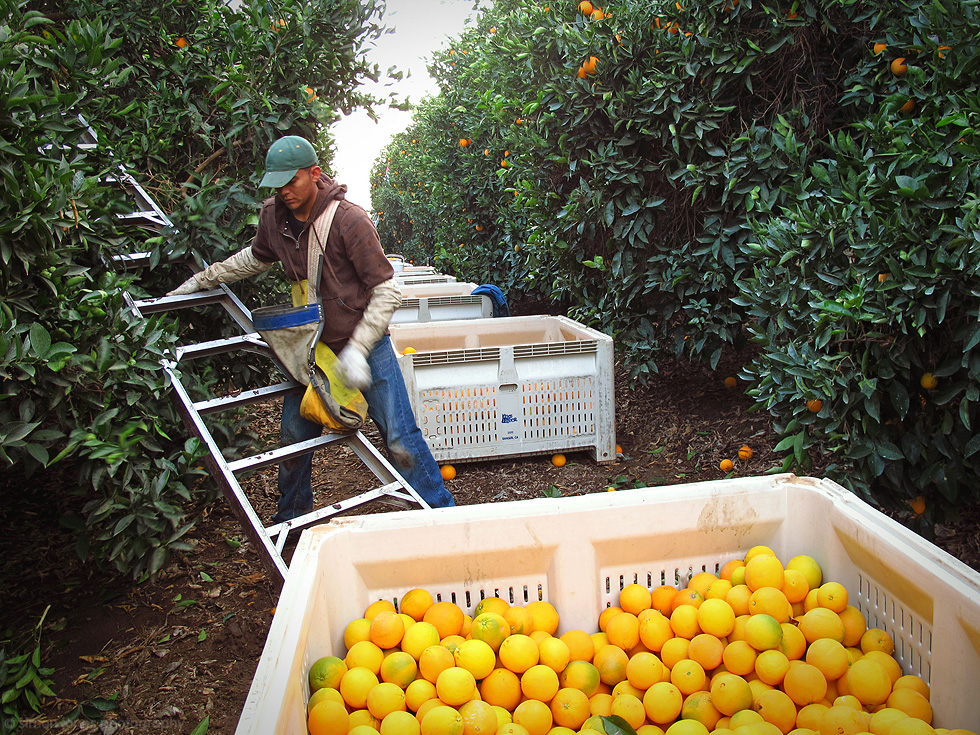-

It’s Orange harvest season in California’s San Joaquin Valley where hundreds of fruit pickers work until dusk harvesting oranges by hand. As I walked through orange groves near Fresno, all of the pickers I saw appeared to be hispanic. This came as no surprise to me as this work has long been done by immigrants who have come here since the 1800’s, powering the agricultural epicenter of California, and the multibillion-dollar economic engine that drives the entire region.
As I took photographs a few of the orange pickers seemed a little weary of me. It may have been that they simply didn’t want to be in my pictures, though I wondered if their reticence might have been because they were among the estimated 12 million undocumented (illegal) immigrants that have made California their home.
Of course, the subject of illegal immigration is a thorny issue in the state, and indeed all states that have a border with Mexico. Surveys report that Californians are in favor of tough immigrations laws like those implemented by Arizona, but the reality is that while laws do exist to curb the use of undocumented workers, enforcement of those laws appears to be lax.
In recent years statistics and estimates suggest that there has been a slowdown in the flow of undocumented workers into California and the rest of the United States. However, while politicians might claim this to be down to tough new anti-immigration laws and policies, the reality is that they’re just one element in a complex structure of issues that have led to the slowdown. Other key contributing factors include the aging population and shrinking families in Mexico, violent drug wars south of the border, and steeply rising prices asked by the “coyotes” who smuggle workers across the border.
Of course, some Californian farmers say that without the undocumented workers, their businesses, and indeed the region’s economy as a whole, would fall into a dangerous decline and might even collapse entirely. But this is a hotly contested issue with experts and economists suggesting farmers could survive without undocumented workers if they were willing to increase wages or invest in new technologies.
In the end, I have no idea if any of the people I saw were illegal immigrants or not, and I wasn’t about to ask. I did try to have a conversation with the man in today’s picture. I wanted to hear his story because I was sure he would have one to tell, but he didn’t speak English, or at least he didn’t speak English to me, and maybe that in itself is a story?
